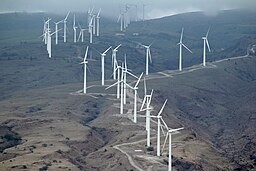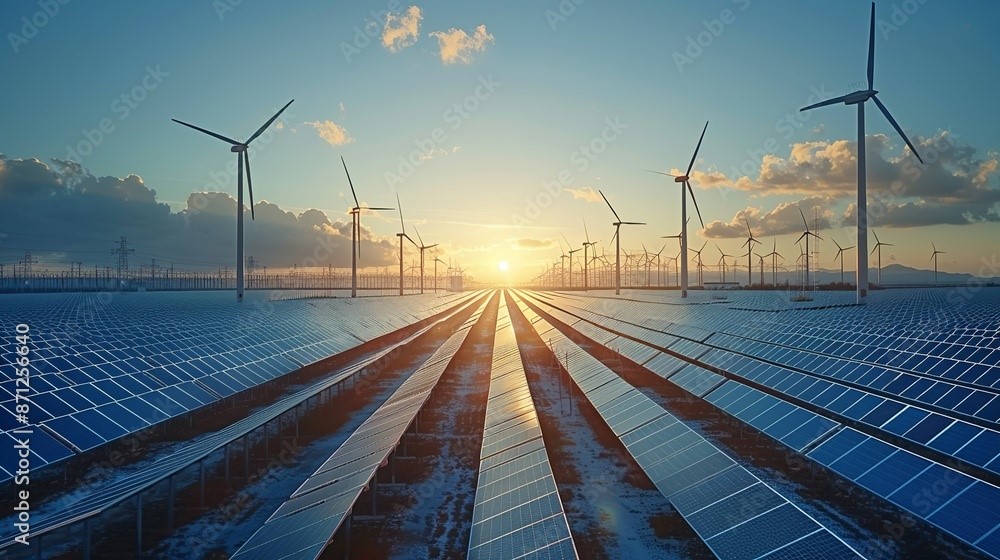Solar panels are about as popular as sewage lagoons to people who don’t have them on their own roofs. And windmills, that giant crop sprouting in the open parts of the country, are often as welcome as tornadoes.
Large, “utility-scale” renewable energy installations almost always attract fierce local opposition. Rural counties pass zoning ordinances that make it as difficult and unprofitable as possible to build them.
If this is contentious now, what will it be like if the country ever gets serious about replacing fossil fuel energy? Fossil systems don’t take up much space because they pull energy-dense fuels like coal and oil from underground. Renewables are solar energy — the sun causes the winds to blow, the waters to flow and the biomass crops to grow. The Earth is pelted with enormous streams of solar radiation, but it is very diffuse and has to be harvested over wide areas.
This is the problem of “power density,” which is basically how much energy we can get per unit of land area. The subject is comprehensively treated by Vaclav Smil, a world-renowned energy expert based at the University of Manitoba, in his book Power Density (2015). Smil calculates the areas taken up by energy extraction, transport, electricity generating plants and transmission lines for coal, natural gas, oil, nuclear, hydropower, wind, solar, biomass and geothermal.
Smil’s study is a caution to those who think we can and must continue full-throttle with our high-production, high-consumption, high waste, endless-growth economic system.
I’ll cut to the chase and give Smil’s approximation of how much of the US land area it would take to replace all fossil fuel use (at the 2012 level) with wind and solar power: 25%.
25% is an expanse of wind and solar large enough to interfere with daily life, to put it mildly. It could be reduced to 17% by putting more solar panels on existing roofs and moving some wind generation offshore. Yet either way it’s an understatement, because Smil has omitted three big things.
First, for wind Smil includes only the area of the pads on which the towers are built and the access roads to those pads. This minimizes the impact of wind turbines, as anyone knows who’s seen an array of them from the window of a car or train. If placed too close together, they create turbulence and reduce efficiency. As a rule of thumb, they should be separated by at least seven times the width of the rotor blades, which translates into 40 acres or so for each turbine. Farming or other uses can still occupy 95–99% of the area, right up to the base of the towers, but a wind farm is still a looming presence in the landscape, as the rural protesters will attest.

Second, he’s not counting electricity that’s not used as electricity directly but to make other, combustible fuels like synthetic hydrocarbons; if that extra electricity is included “the eventual land claim would be significantly larger.”
Third, he is not counting land used as rights of way for transmission lines. The tall towers that carry these wires are an omnipresent feature of the landscape. They are shared by all forms of generation, fossil, nuclear and renewable, though some are now being privately built to carry renewable power only. They could become much more prominent. Lack of transmission is the biggest constraint on the building of renewables, especially to get wind power from the Great Plains to the cities where the people are. The concentrated energy demands of densely built cities can’t be met even by roofing every parking lot and covering every available roof, street and lot with solar panels.
Unfortunately, many people will read this as an argument to keep burning fossil fuels. In 2023 and 2024, the disasters that substantiate the reality of global heating have grown in number, size and intensity to the point that only wishful thinking can ignore them. Fossil fuels have empowered industry to exploit natural resources at unsustainable levels and dump their wastes in the form of heat, pollution, trash, and a plague of plastic.
Renewable energy will restrain this destructive power by its very nature: it relies on the present flow of solar energy rather than millions of years’ worth of fossilized plants. It can give us much less stuff that we’ll be better off without.
The way to control power density is to lower our demands for energy.
Appendix: Other estimates of power density
Smil’s estimate of power density is on the high side of others I’ve seen. On the low end is Mark Z. Jacobson and Mark Delucchi’s “WWS” (wind, water & solar) energy system, which they claimed in 2010 would take up 0.4% of the world’s land area for its footprint and 0.6% for spacing. Smil calls this “unbounded science and engineering fiction.”
In considering higher estimates for the US, bear in mind that the land area of the lower 48 states is 7.7 million square kilometers. A study from Princeton University, projecting for 2050, found that wind would take 1 million km2 (the area of Nebraska, Iowa, Kansas, Missouri, Oklahoma and Arkansas) and solar 0.061 million km2 (the area of West Virginia). An MIT study found that all-solar would take only 33,000 km2, reduced to 12,000 km2 if concentrated in the sunniest regions; getting one-third of our energy from wind would take 66,000 km2.
I haven’t tried to dig up all the assumptions behind these different estimates, except I observed that the Princeton and MIT studies do not assume total electrification of all energy uses, especially not industrial uses, so they underestimate future energy demands.
It’s worth noting that electricity demand from data centers is growing especially rapidly, for the “cloud” of stored internet data and the demands of artificial intelligence and cryptocurrency “mining.” I’d guess that 99% or more of this data has no long-term social benefit, so we could press heavily on the delete button.

